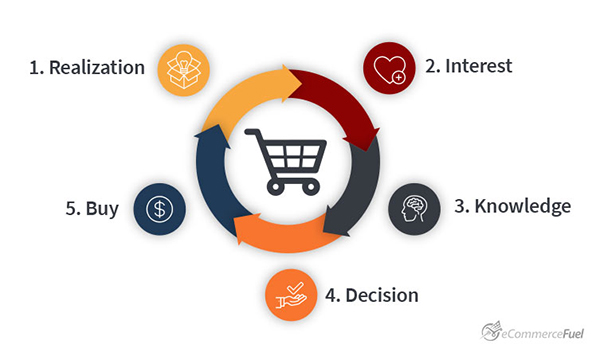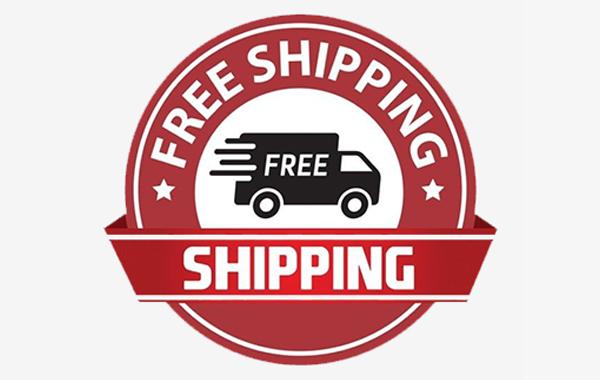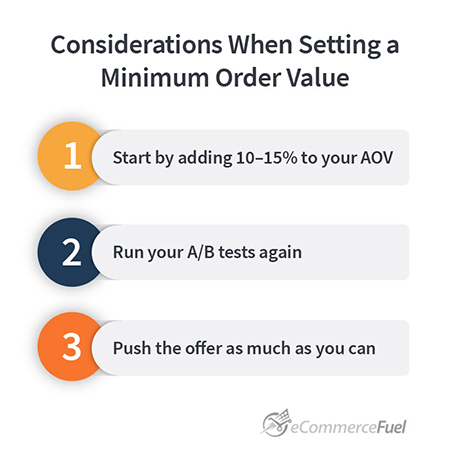Free shipping!
Shoppers love to see those two words on an online store and its products. It’s an incentive for them to complete a pending purchasing process. They go wild with excitement knowing they have one less thing to pay for.
But is free shipping good for your eCommerce business? Is it profitable and does it increase your sales?
The answers to both questions depend on a few factors. Here, we look at:
- What offering free shipping entails.
- How to boost sales from it.
- How to pay for it.
- When to offer it.
Is It Better to Offer Free Shipping?
Free shipping is a marketing method used to eliminate customers’ shipping charges for approved purchases. That’s its simplest definition.
However, there are different kinds of variations to consider, including free shipping:
- With no limitations or qualifications needed.
- After a minimum amount threshold has been reached.
- For members of a club or community only.
- For specific products.
- Promotions during a specific period of time.
- Sent directly to a brick-and-mortar store.
- And many more different combinations that eCommerce professionals can think of.
This eCommerce method is used because of the psychological benefits it presents to customers.
Within our own eCommerce Fuel community we often have conversations around the merits of offering a free incentive to customers. Here is a question from the forum:
After moving to a new shopping cart this year (Bigcommerce from Prostores), I now can see new statistical information and the “abandoned cart” statistic of 85% worries me (it’s about 15-25% higher than the studies I’ve seen). I’m considering “free shipping” (i.e. building in shipping costs to the selling price) to alleviate this.
Statistically, my shipping costs are 18.25% of the price the customer pays out the door. So say a simple price increase of 20% on everything will allow me to offer “free worldwide shipping”. This will likely be a boon to my international buyers as my bulky widgets are expensive to ship and them not seeing that cost could help. Sounds like an interesting and simple experiment, but I’d like to know what the experience has been for folks in this forum that have tried this out.
And the first answer in the forum conversation from a long-time member:
We offer free shipping for domestic and free with minimum order for international. Our products are small and light, and we ship USPS FCM for 97% of our orders. Free shipping for us was a no-brainer, once we realized we could ship the average order for $1.93 + a padded bag.
As a small brand in a multi-$billion sector, we need to remove every obstacle to conversion… free shipping, free returns, no-questions-asked return policy, etc… I can’t tell you that our sales increased with free shipping. I can tell you that if we didn’t offer it, we’d be out of business, since all our competitors offer it… so to be competitive, I simply had to figure out how to do it cheaper. USPS FCM.
For access to the full conversation between members, either login or learn more and apply for membership.
The Psychology of It All
For free shipping to be effective, it has to be applied at the right point of the purchasing cycle. Every shopper who visits an online store is at one of these points:
- Realization: knowing that they have to fill an emotion or a need by making a purchase.
- Interest: seeing how your product meets their need.
- Knowledge: learning more about the benefits and characteristics of your product.
- Decision: they choose their favorite product to fill their need after comparing a few options.
- Buy: finalizing the purchase and becoming return customers.

The fifth point in the cycle, ‘Buy’, is where the free shipping technique adds value for a customer. Once they’ve decided to buy, you can remove the thought of risks by using the term ‘free’. But if they’re not at that point and aren’t yet fully convinced by your product, free shipping will do little to convince them. Here’s why:
- If the potential customer is at the realization stage, they’re still figuring out what their need is. Free shipping won’t get them excited if they even don’t know whether to shop or not.
- If they’re at the interest or knowledge stages, they’re still evaluating their options. They won’t buy something they’re unsure of just because it has free shipping. That would be careless.
- If they’re at the decision stage, they can choose to buy the best product in that moment regardless of free shipping. This will boost their confidence in their choice. Finding out that free shipping is offered is one more added bonus that makes them feel good.
Customers may have to go through each stage of the cycle and be in a buying mood. And there’s no better time of year for them to find the buying spirit than during holiday seasons.
The Stats Backing Free Shipping
Shoppers love free shipping and that’s more than just an assumption. It’s a fact backed by research from different organizations.
Many sellers offer free shipping because customers say they want it. In fact, 73% of online shoppers say that free shipping is what they want to see at checkout.” – FedEx
- Online shoppers prefer the cheapest shipping option 2/3 of the time. (Get Elastic)
- 60% of shoppers abandon their carts because of extra costs, including shipping. (3D Cart)
- 9 out of 10 shoppers are motivated to shop online when free shipping is offered. (Marketing Land)
- Free shipping offers that save customers $6.99 appeal more to shoppers than $10 discounts on products. Even though they save more with the discount. (David Bell)
- When a free shipping threshold was offered, such as ‘free shipping on orders over $75’ orders increased by 90%. (Red Door)
- 58% of eCommerce customers add products to their cart to qualify for free shipping. (ComScore and UPS)
- 83% of shoppers can willingly wait an additional 2 days for delivery if shipping is free. (ComScore and UPS)
- “Unacceptable shipping costs” is the main reason why online shopping conversions drop significantly. (Rejoiner)
- 75% of shoppers expect delivery to be free even for order values below $50. (NRF)
- 65% of shoppers check free-shipping thresholds before adding items to their shopping carts. (NRF)
Free shipping can help you succeed in eCommerce, but it shouldn’t be the only technique you use. You can learn new frameworks, proven tactics, and ideas when you’re a part of a community. eCommerce Fuel is that community. Benefit from interacting with like-minded people in your area of interest.
How Do You Make Money With Free Shipping?
Yes, it can be profitable in the right circumstances. You’re guaranteed to increase conversion rates through it because shoppers love it so much. But it can also decrease your profit margins because you have to pay for it.
To make sure you’re getting the best out of free shipping offers, do the math and run simple tests.
You can start by running a basic A/B test to determine how much free shipping can cost you.
Pick a random sample of customers to offer free shipping to. Then compare your control group with your test group on the following changes:
- Change in average order value: the average amount spent by a shopper when they make a purchase.
AOV = Total Revenue / Number of orders
- Change in conversion rate: the percentage of customers that actually make a purchase.
CR = (Conversions / Total Visitors) * 100%
- Change in gross margins: the amount of money made for every product sold.
GM = Online Selling Price – Cost of Production & Shipping
For each of the two groups, calculate AOV, CR, and GM. Once you have these figures find the difference in each respective value between the two groups. This will enable you to find the percentage change in profit:
% Change in Profit = [(Change in CR * Change in AOV * (1 + Change in GM)) – 1] * 100
The percentage change in profit will be a negative value. This gives you an idea of how much more you’ll spend when offering free shipping.
You need to know how to turn that negative value into a positive number and a profit increase. Here are different ways of doing just that:
Apply Free Shipping for Ground Shipping Only
Ground shipping is a cost-effective way of transporting items to a customer.
Ground shipments are generally forwarded through freight services such as FedEx and UPS, which route smaller and larger trucks across the country to ship and deliver your products.” – ShipHawk
This method takes longer than others, but with customers willing to wait for free shipping, it’s worth trying. You can considerably reduce your expenses in this way.

Image courtesy
Set a Minimum Order Value
When you set a minimum threshold, you can:
- Raise your average order value as shoppers add to their carts to meet the threshold.
- Reduce the cost of shipping by lessening the number of orders as customers buy a lot in one go.

To figure out what your threshold should be, start by adding 10%-15% to your AOV. Say your existing AOV is $60, adding 10% to 15% will make it $66 to $69.
Once you’ve added your percentage, run the above A/B test again and look at your new results. The percentage change in profit should have a positive value. This means that you earn even by offering free shipping.
The final step in this technique is to push the offer as much as you can.
Let your customers know how close they are to the threshold as they add items. Remind them of the free shipping opportunity once they’ve reached the limit. Show them how much they’ve saved at the checkout phase.
Offer a Low Fixed Fee for Shipping
Allow your shoppers to pay a friendly flat-rate no matter the number of orders they make. This technique is great because:
- Online customers want to shop more since they get free shipping for added items.
- Shoppers cover most or all of the regular cost of shipping if they make low margin orders.
- The overall gross margin rises as shoppers make more orders.
Add Shipping Cost To Product Price
This is all about the psychology of seeing prices. Take two options for example:
- $50 + $5 shipping fee
- $55 and free shipping
A shopper is more likely to pick the option with free shipping than the one with an added charge. This works well if you’re selling products that customers won’t find on many sites.
To include shipping costs to your product prices, change the prices of items under the threshold. Add a percentage of the likely shipping cost.
For example, say you have a free shipping offer for orders of $50 and above. If an item is normally priced at $15, add 30% ($15/$50) of the shipping cost to the product price. The new price is, therefore, $19.50.
Only Provide a Free Shipping Offer for Specific Items
You can reduce the cost by:
- Removing low margin goods from the free shipping offer.
- Restricting free shipping to high volume items that have low shipping costs.
- Removing heavy items that carry high shipping costs from your free shipping offers.
When Should (and Shouldn’t) You Offer Free Shipping?
Do It
You should offer this incentive if:
- You’ve calculated the cost and you can afford it without it negatively affecting your bottom line.
- Your competitors are doing it. You need to remain competitive, and even if they don’t, offering it could give you an advantage. Most shoppers (81%) are likely to research three online retailers before buying.
- Your supplier offers a free or affordable shipping method.
- Your goal is to grow your order numbers.
- You’ve successfully included the cost of free shipping in the item price.
Don’t Do It
Avoid offering free shipping if:
- You’re trying to increase your average order value without setting a threshold.
- You’re using the tactic as a limited promotional tool, but you usually offer it year-round. You can use it to promote a loyalty benefits scheme, however. Offer year-round free shipping to those who bring repeat business..
- Your product margins are too low that offering free shipping would make them unstable.
- You have high shipping costs or guarantee fast shipping that inevitably increases costs.
- You can offer free returns rather than free shipping. Free returns cost you less because only a small number of shoppers are likely to return items. Free returns are particularly appealing to those in the fashion industry. This is because shoppers can’t always tell whether clothes they buy will fit them as intended.
In Summary
Free shipping is an effective way of increasing your sales because shoppers love it. They see an added bonus through which they can save money when it’s time to buy. However, it only works for you in the right circumstances.
You can increase sales by using one or more of the following techniques:
- Restricting free shipping to group orders.
- Setting a minimum threshold for shoppers to meet and/or surpass.
- Offering an affordable flat rate for all sales.
- Adding the free shipping cost to the product price.
- Offering free shipping for sales of specific items.
But remember to offer free shipping when:
- You can afford to do so.
- Your competitors offer it or you want an advantage over them.
- Your suppliers offer it.
- You want to increase order numbers.
- You’ve added the cost you’d pay for free shipping in the product price.
Photo by freepik
